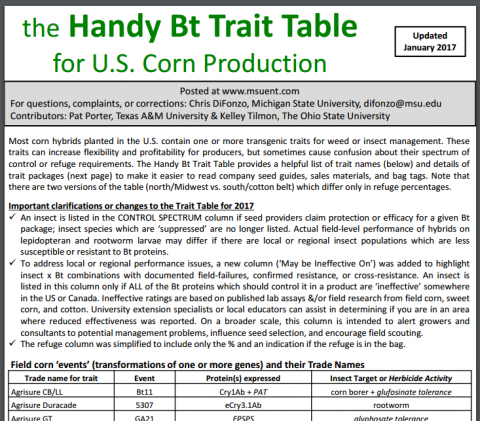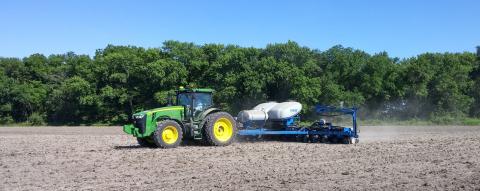A Short Introduction to the Distillers’ Dried Grains Export Market
February 15, 2017
Vanessa DeOliveira, Masters student, Department of Agricultural Economics
Kate Brooks, assistant professor, Department of Agricultural Economics
Lia Nogueira, assistant professor, Department of Agricultural Economics
Considering Non-Bt Traited Corn in 2017? Plan for More Scouting
February 8, 2017
If you're considering planting non-Bt corn this year, entomologists urge you to plan for the additional pest management practices (and associated costs) you may need to adopt, given this decision.

Youth Corn Challenge Offers Real-World Experience, Rewards
January 24, 2017
Winners of the 2016 Nebraska Innovative Corn Challenge for Youth were recently announced and the top prize went to the Kornhusker Kids 4-H Club of Cuming County. Challenge participants learned valuable lessons in production ag, research, teamwork, and problem-solving while competing for cash prizes made possible by the Nebraska Corn Board.
Handy Bt Trait Table Revised for 2017
January 19, 2017
The Handy Bt Trait Table for US corn production has been updated for 2017. It includes information on all registered Bt corn hybrids commercially available and summarizes which insects are controlled by which hybrids, which Bt and herbicide tolerance traits are expressed in different hybrids, and the Insect Resistance Management Refuge requirements associated with these hybrids.
Sixth Annual Innovative Youth Corn Challenge
January 10, 2017
Are you a youth who enjoys being outside? Learning new things about crops? Are you considering a career involving crops, insects, diseases, soils, water or more? Do you want to help figure out how to feed the world’s growing population sustainably? If so, the sixth Innovative Youth Corn Challenge offers you an opportunity to learn by doing while competing for cash prizes.
CornSoyWater: An Online App to Aid in Irrigation Management
December 16, 2016
Traditional irrigation decision-making relies heavily on experience and requires frequent visits to the field. The process is time consuming and labor demanding, while the results are not quantitative and prone to error.
Fremont Corn Expo Scouts Ag Horizon and Offers Answers
December 13, 2016
Information and tools to weather financial, storm, technological, and nutrient challenges will be among the topics at this year's Fremont Corn Expo Jan. 5 in Fremont. (Photo by Rachel Stevens)
Crop Production Clinics Jan. 4-19 across Nebraska
December 8, 2016
This year's Nebraska Crop Production Clinics feature agronomic, pest management, and farm management information to help growers make smart research-based decisions to improve their bottom line. Clinics will be held at nine sites across the state, starting with Gering on Jan. 4 and ending with Kearney on Jan. 19.






